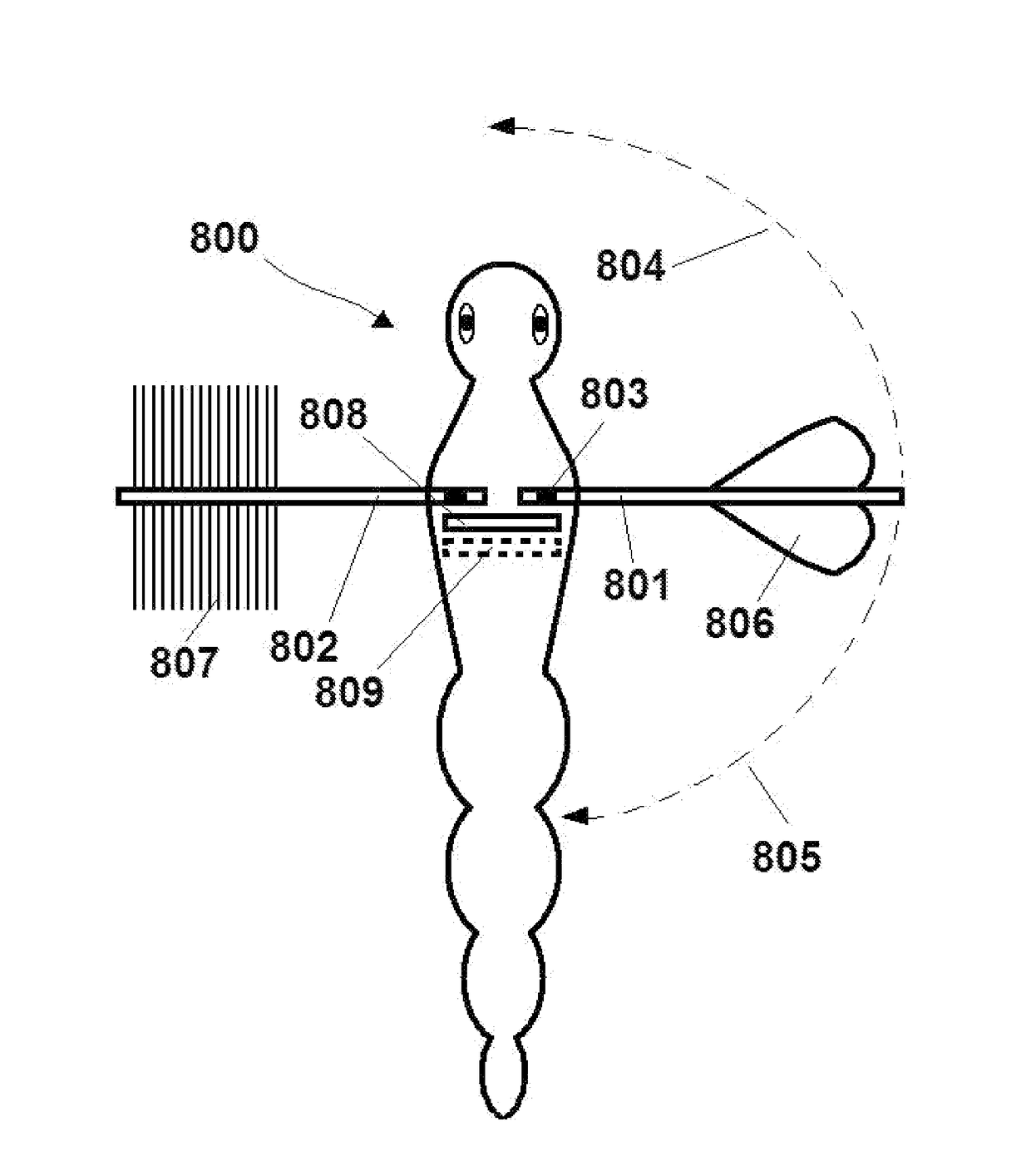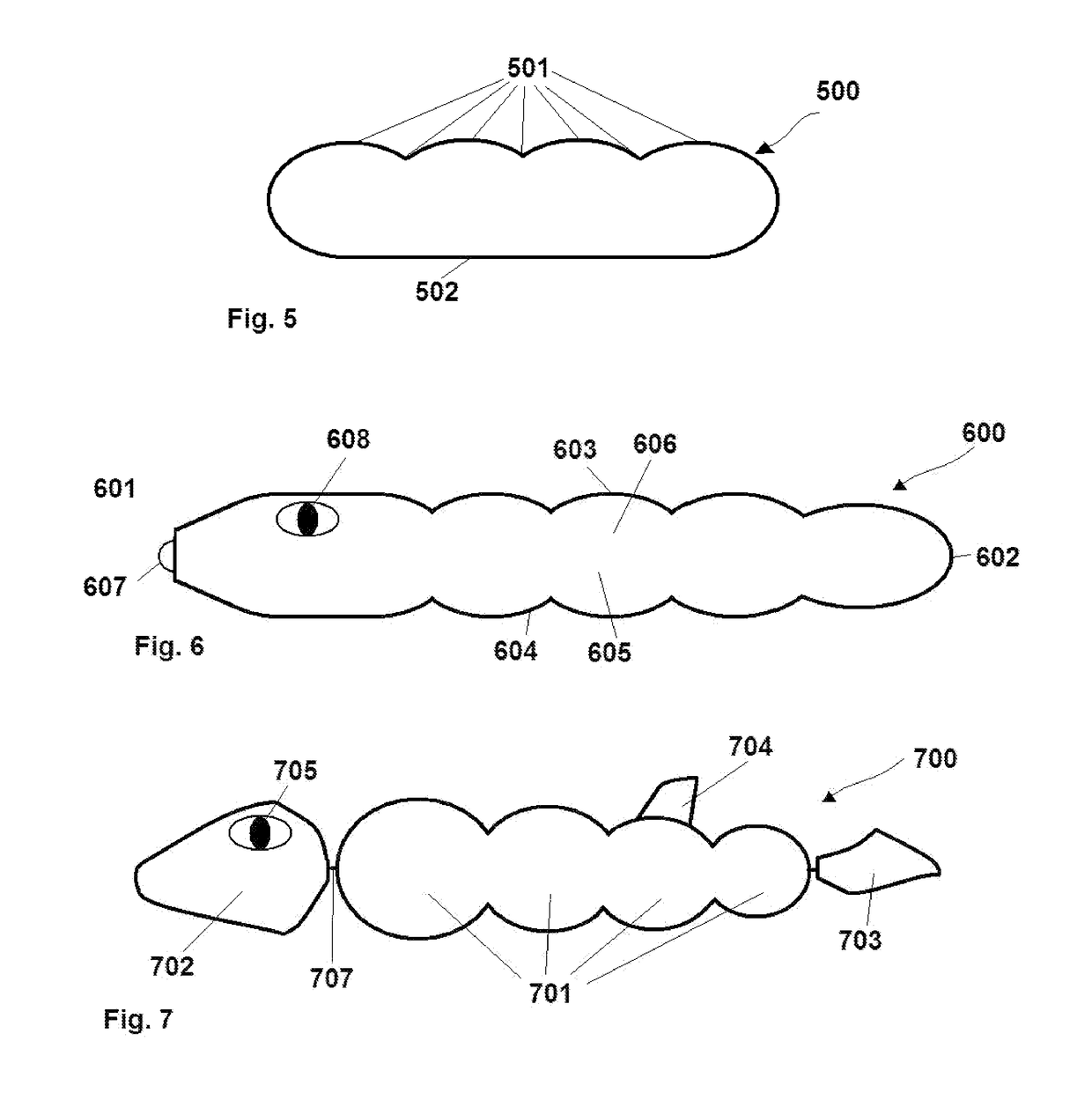Fishing lure
a technology of lures and fish, applied in the field of fishing lures, can solve the problems of unsuitable life-like qualities of organic prey sought by fish, difficulty in achieving the life-like qualities of organic prey, and high cost, and achieve the effects of increasing roll, yaw and pitch, and being attractive to fish
- Summary
- Abstract
- Description
- Claims
- Application Information
AI Technical Summary
Benefits of technology
Problems solved by technology
Method used
Image
Examples
Embodiment Construction
[0019]An artificial, or non-organic, or man-made fishing lure is a preferable substitute for live or organic bait. Bait can be an essential component that is affixed in conjunction with a hook to the end of a fishing line so that a fisherman or an angler may snare, capture, hook or catch a fish. A non-organic artificial lure is often preferred to organic bait because it is more cost-effective, reusable, cleaner, and, in some instances, more effective than live bait. A lure is an object, often designed to resemble fish prey, equipped with one or many hooks or sharp objects used to ensnare or catch fish. The invention described herein may be applicable to any form of fishing, including that intended for commercial, personal, leisure, sport or hunting purposes. The intended purpose for fishing may be to obtain fish for consumption, competition, leisure or any conceivable purpose. The term fish as used herein generally describes those animals of classes Chondrichthyes and Osteichthyes b...
PUM
 Login to View More
Login to View More Abstract
Description
Claims
Application Information
 Login to View More
Login to View More - R&D
- Intellectual Property
- Life Sciences
- Materials
- Tech Scout
- Unparalleled Data Quality
- Higher Quality Content
- 60% Fewer Hallucinations
Browse by: Latest US Patents, China's latest patents, Technical Efficacy Thesaurus, Application Domain, Technology Topic, Popular Technical Reports.
© 2025 PatSnap. All rights reserved.Legal|Privacy policy|Modern Slavery Act Transparency Statement|Sitemap|About US| Contact US: help@patsnap.com



